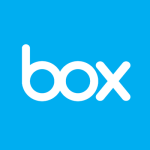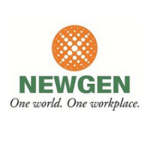What is our primary use case?
We usually use it for document management in insurance or finance companies. Some of our clients are using the workflow for insurance cases. In these companies, FileNet is ingesting a lot of documents and a lot of insurance claims.
In terms of automation, we're using IBM Content Collector and we have started using RPA a bit. We're using ICC for some of our customers to ingest and automate the upload of multiple documents in bulk. We've just started using automation with RPA but not with the P8 system; rather for other functionality that customers need.
Ninety percent of our customers in the insurance industry, here in Israel, are working with FileNet.
Most of our customers use FileNet on-prem.
How has it helped my organization?
Filenet saves time in terms of clearance of insurance claims. Building a claim, from the customer side, is often easier as well. Not everything is perfect but it's good enough to work in most of the big insurance companies here in Israel.
What is most valuable?
Most of our customers are not using some of the most valuable features, like analytics, text search, or case or workflow features. They are generally not used by our customers because they're using other programs that are built-in to their networks. So if a customer has a workflow system already, he won't use the workflow system that is built-in to FileNet, although it's available.
It's the same with the content analytics. If the client has Kibana and Elasticsearch for searching text, they won't use that feature that comes with the FileNet P8 because it's only for the P8 system and not for the whole network.
What needs improvement?
The analytics in FileNet are too complicated and they consume too much infrastructure, memory, and CPU. They're too expensive to work with.
The usability, with the addition of Content Navigator, is not good enough. We're building our own interface, doing a facelift of the product, to satisfy our customers. People here in Israel are generally more Microsoft-oriented. They're used to the SharePoint look and feel, the Outlook look and feel. When they see Content Navigator and its features, it's a bit different for them. It's hard for them to get used to it.
Most of our customers and users are asking for features with a file-system-type look and feel. For example, when they open a folder in their file system they want to see the hierarchy of the folders. If IBM built something like other products, like M-Files for example, with a file-browsing feature, into P8, it would be a very good feature. Most customers around the world would use it.
That is what we're trying to build on our own. It would be easier for the customer to work with, in the same way IBM did with the Content Navigator Office Integration. There, you can browse through Office, the folders, and find things. You can drag and drop documents from Word, from Outlook, straight into the file folder in FileNet. If they would bring these kinds of features into the file system itself, without Office, it would be a killer feature.
For how long have I used the solution?
I have been using FileNet for 20 years.
What do I think about the stability of the solution?
We have been working with it for a long time. It's one of the older versions. Both it and the new version are probably very stable.
We generally don't have any issues with the stability of the system. That could be because we are too small. In Israel we have small companies and they don't have very complicated systems, like in the United States or Europe. We have medium-size customers, compared to companies around the world. We don't have 500 users at a customer's site so these are not huge systems. And they're usually in the same geographical area. It's not like there is a site in New York and another one in Chicago or Philadelphia.
What do I think about the scalability of the solution?
There are no issues with scaling. It's based on WebSphere Application Server so it's very easy to scale up.
How are customer service and technical support?
I've contacted tech support many times. I don't have very much good to say about it. The people in support are changing often so most of the people there aren't familiar with the product. They are always asking for the basic information about the system, even though we've worked with finance customers for many years and we know the product. We try to provide the actual error to customer support and to get an answer about it. But until they forward it to first-level support or engineering, we lose time. We are not usually satisfied with customer support.
Which solution did I use previously and why did I switch?
We used to use M-Files and we are a little familiar with Alfresco and Documentum. Generally, the biggest difference between those solutions and FileNet is the price. The others are much cheaper but most of them are less robust and less stable than FileNet. Programming and manipulating other programs to work with FileNet is easier than in Documentum, as far as I know. Each one has its own best features. It depends on the use case.
How was the initial setup?
The initial setup depends. If we're talking about a Windows-based installation, it's very easy. For other operating systems, like Linux, it's a bit complex. If we're talking about the whole P8 suite, it's very complicated. Documentation on how-to, screenshots, or step-by-step instructions are missing in all of IBM's P8 finance products.
Unlike Apple or with other vendors, where you've got to book, you can install it without any understanding of the underlying system. In finance, with P8, if you are not familiar with bits and bytes you won't end up completing the installation.
In terms of how long it takes, if we're talking about only Content Navigator and FileNet P8, a basic system, just the installation could take three to five days. And that's not talking about the implementation. It depends on the customer's site, on the operating system, on the database vendor. Sometimes the version doesn't support it. It also depends on the network. It depends on a lot of things that are not straightforward.
We have a standard implementation strategy that we use for our customers. We're usually asking for Microsoft Windows operating system and either a SQL or Oracle Database, and we are not doing any other complex installation configurations like a very sophisticated single sign-on. That's because it doesn't work very smoothly.
What was our ROI?
The ROI on the automation aspect of FileNet is a big question. I don't have specific numbers. We're dealing with between 30 and 40 customers here in Israel, and every customer is different.
Within the IBM DBA (Digital Business Automation) portfolio we use Datacap and we do see a return on investment from that. The automated document scanning and email scanning show a very good return on investment.
What other advice do I have?
If you are a small or medium-sized company, I would advise working with other programs before you put money into FileNet, even though I've worked with it for a long time. If we're talking about a large company, for the robustness, stability, performance, and the growth — that you can grow it within seconds — I would advise using FileNet, without any doubt.
The performance is dependent on the database. Issues with performance are usually associated with databases issues. And, as I mentioned, the GUI of IBM Content Navigator caused a lot of issues with performance, but it's working well with our GUI.
I would rate FileNet at eight out of ten. It's not a ten because of issues like the flexibility of the system, the ease of working with or manipulating or programming and enlarging it. It needs to be more flexible to work with, not hard-coded and not closed like it is now.
Disclosure: PeerSpot contacted the reviewer to collect the review and to validate authenticity. The reviewer was referred by the vendor, but the review is not subject to editing or approval by the vendor. The reviewer's company has a business relationship with this vendor other than being a customer: Partner.
















